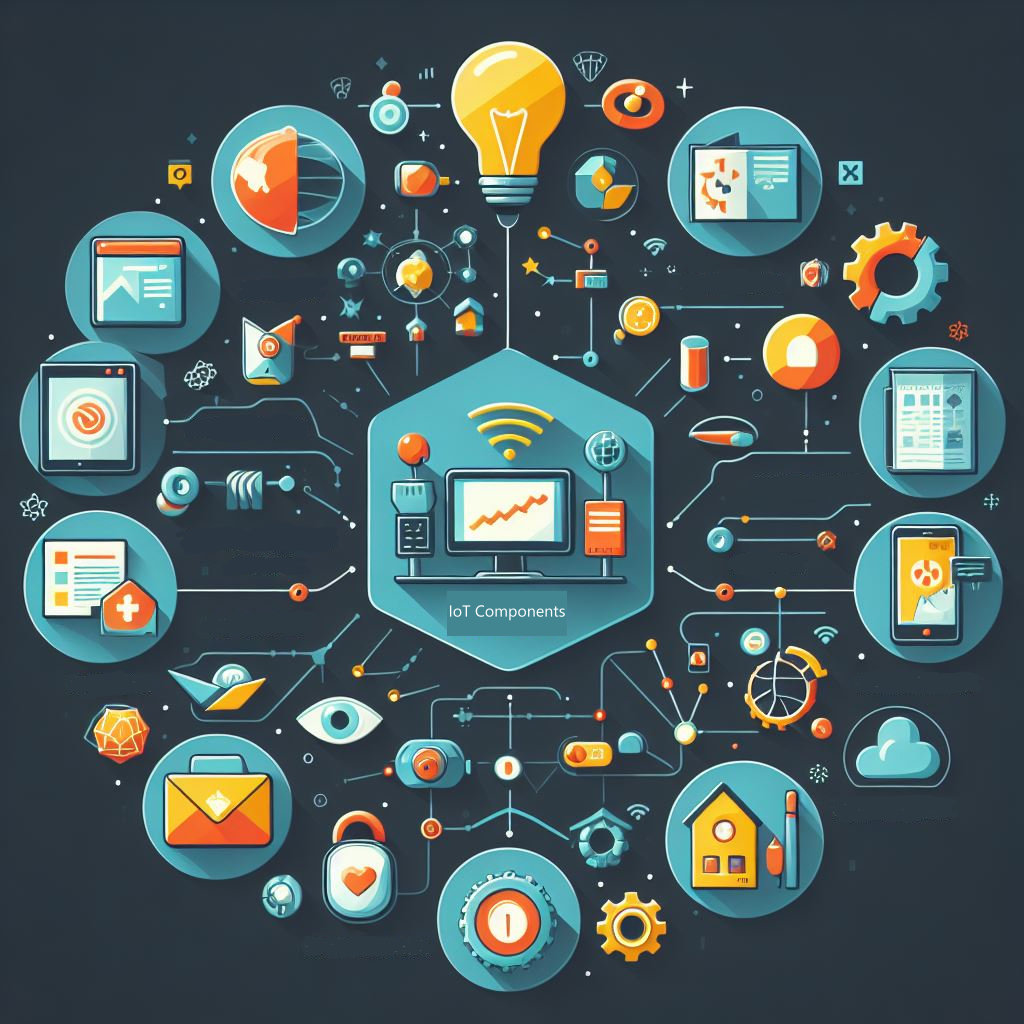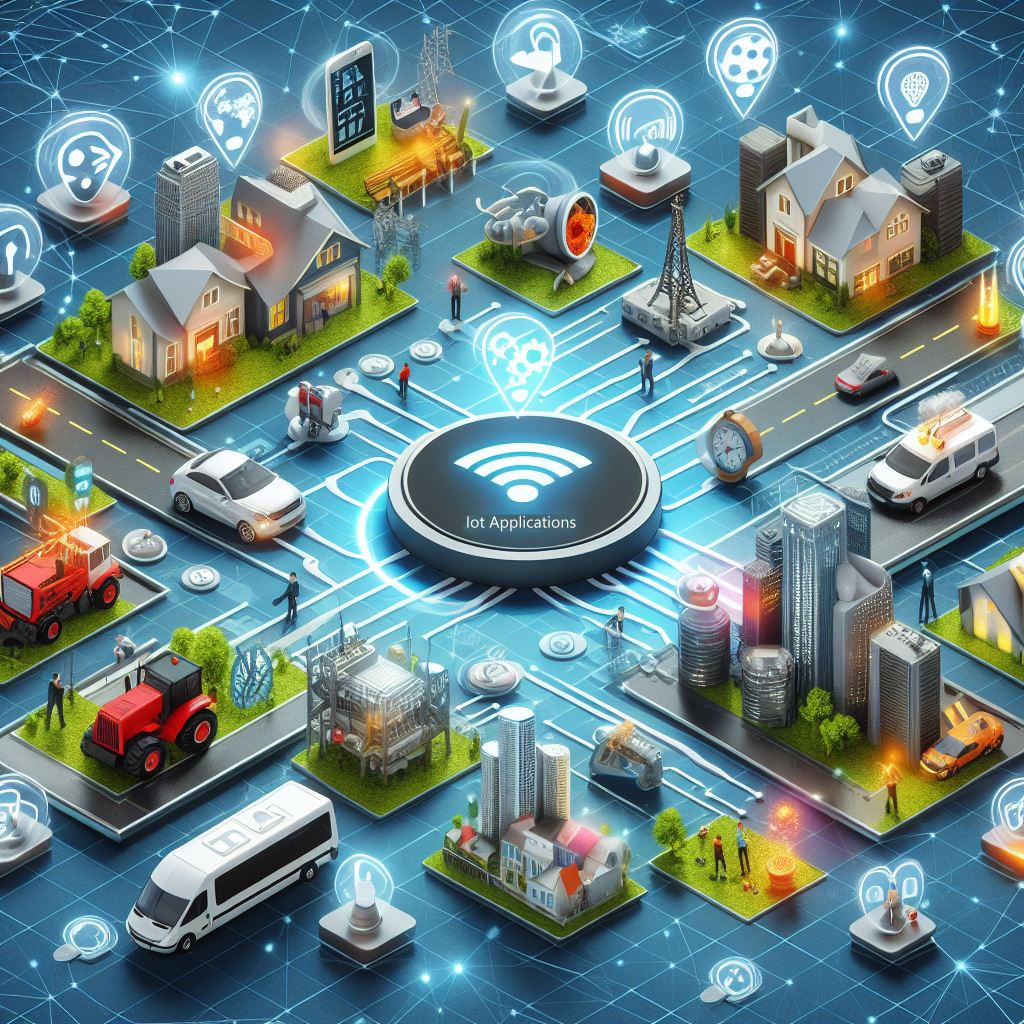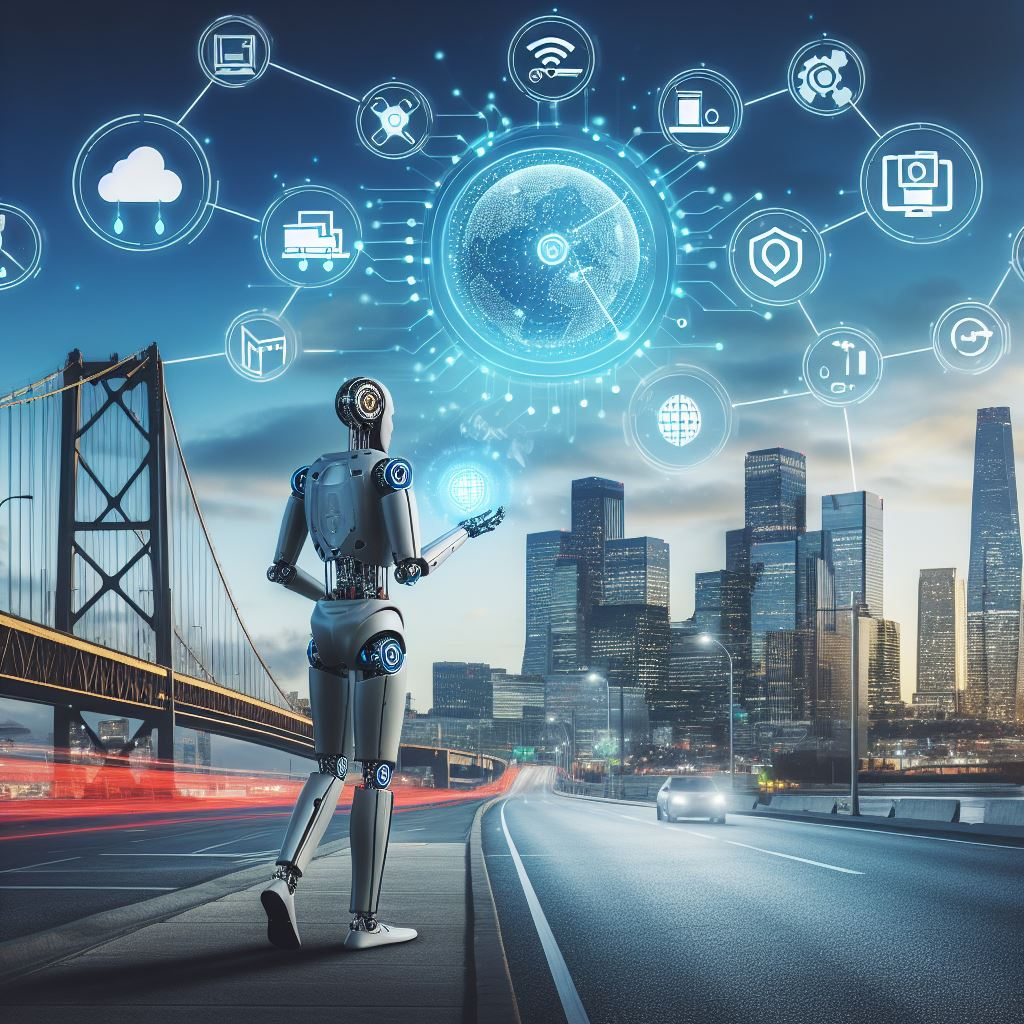The Internet of Things: Unraveling the Intricacies of a Connected World
Introduction
The Internet of Things (IoT) is a rapidly evolving technological paradigm that has redefined the way we interact with the world around us. By connecting everyday objects to the internet and enabling them to communicate with each other, IoT has the potential to revolutionize industries, transform cities, and improve our daily lives. This article delves into the concept of IoT, its applications, challenges, and future prospects.
Understanding the Internet of Things
IoT is a network of interconnected devices, sensors, and objects that can collect, share, and process data without human intervention. These devices, often referred to as "smart" or "connected" devices, use various communication protocols and technologies to transmit information to the cloud, where it can be analyzed and used to make intelligent decisions. IoT spans a wide range of industries, including agriculture, healthcare, transportation, and manufacturing, enabling businesses and individuals to achieve unprecedented levels of efficiency, automation, and insight.
What is IoT?
The Internet of Things (IoT) is the network of physical objects or "things" embedded with electronics, software, sensors, actuators, and connectivity, which enables these objects to connect and exchange data. IoT has the potential to revolutionize many industries, including manufacturing, healthcare, transportation, and agriculture.
How does IoT work?
IoT devices collect data from their surroundings and send it to the cloud. The data is then analyzed by software applications, which can be used to make decisions or take actions. For example, an IoT device in a manufacturing plant could collect data on the temperature and pressure of a machine. This data could then be used to predict when the machine is likely to fail, so that maintenance can be scheduled before it happens.
Key Components of IoT

- Sensors: Sensors are the foundation of IoT, responsible for collecting data from the environment. Examples include temperature, humidity, motion, and pressure sensors. These devices can be embedded in various objects, enabling them to monitor and react to changes in their surroundings.
- Connectivity: IoT devices rely on various communication protocols and technologies to transmit data to the cloud. Examples include Wi-Fi, Bluetooth, Zigbee, and cellular networks. The choice of connectivity depends on factors such as power consumption, range, and data transmission rates.
- Data processing and storage: Once data is collected and transmitted, it must be processed and stored for analysis. Cloud-based platforms are often used to store and process this data, enabling businesses to gain insights, make data-driven decisions, and automate processes.
- User interface: IoT systems typically include user interfaces to enable human interaction with the devices. This can include mobile apps, web portals, or even voice-activated interfaces, allowing users to monitor and control their connected devices.
IoT Applications

- Smart homes: IoT has transformed the way we live by enabling the creation of smart homes. Devices such as smart thermostats, lighting systems, and appliances can be controlled remotely, offering increased energy efficiency, security, and convenience.
- Wearables: Wearable devices like smartwatches and fitness trackers have become popular for monitoring health and fitness. These devices can track vital signs, sleep patterns, and physical activity, helping users achieve their health goals.
- Agriculture: IoT is revolutionizing agriculture through precision farming techniques, where connected sensors monitor soil moisture, temperature, and nutrient levels, enabling farmers to optimize irrigation, fertilization, and pest control.
- Healthcare: IoT devices, such as remote patient monitoring systems and smart medical devices, can help healthcare providers track patient health, detect anomalies, and facilitate early intervention.
- Transportation: IoT is transforming transportation through connected vehicles, smart traffic management systems, and real-time fleet monitoring, resulting in reduced emissions, improved safety, and optimized logistics.
- Manufacturing: IoT is helping manufacturers improve efficiency and productivity by connecting machines, sensors, and other devices on the factory floor. This data can be used to track production, identify problems, and make real-time adjustments.
- Retail: IoT is helping retailers improve customer experience and operations by connecting devices such as point-of-sale systems, inventory sensors, and security cameras. This data can be used to track customer behavior, optimize inventory levels, and prevent fraud.
- Energy: IoT is helping utilities improve grid efficiency and reliability by connecting smart meters, sensors, and other devices. This data can be used to monitor energy usage, identify outages, and reduce peak demand.
- Public safety: IoT is helping public safety agencies improve response times and save lives by connecting devices such as fire alarms, traffic lights, and security cameras. This data can be used to track incidents, coordinate resources, and warn the public of danger.
These are just a few of the many ways that IoT is being used to improve our lives. As the technology continues to develop, we can expect to see even more innovative and groundbreaking applications in the years to come.
What are the benefits of IoT?
- Improved efficiency: IoT can help businesses to improve efficiency by automating tasks, reducing waste, and improving productivity. For example, smart thermostats can automatically adjust the temperature of a building based on occupancy, which can save energy costs.
- Increased productivity: IoT can help businesses to increase productivity by providing real-time data and insights that can be used to make better decisions. For example, smart factories can use data from connected machines to identify and fix problems before they cause downtime.
- Improved decision-making: IoT can help businesses to improve decision-making by providing access to real-time data and insights. For example, retailers can use data from connected sensors to track customer behavior and make better decisions about product placement and promotions.
- Enhanced customer experience: IoT can help businesses to enhance the customer experience by providing personalized services and recommendations. For example, a hotel can use data from connected guest rooms to provide personalized recommendations for activities and dining options.
- Increased security: IoT can help businesses to increase security by providing real-time alerts and notifications. For example, a city can use data from connected sensors to track traffic patterns and identify potential security threats.
These are just a few of the many benefits of IoT. As the technology continues to develop, we can expect to see even more innovative and groundbreaking applications in the years to come.
What are the challenges of IoT?
- Security: The proliferation of connected devices has raised concerns about data privacy and security. Ensuring that IoT devices are protected from unauthorized access and malicious attacks is crucial to maintaining user trust and preventing potential damage. IoT devices are often connected to the internet, which makes them vulnerable to cyber attacks.
- Privacy: IoT devices collect a lot of data about users, which raises privacy concerns. This data can be used to track users' movements, habits, and preferences. It can also be used to target users with advertising.
- Interoperability: With a wide range of devices, communication protocols, and platforms, achieving seamless interoperability in IoT systems can be challenging. Industry-wide standards and open communication protocols are necessary to ensure that IoT devices can communicate and work together effectively.
- Data management: As IoT devices generate massive amounts of data, managing and processing this data can be daunting. Robust data management and analytics solutions are essential to derive actionable insights from IoT-generated data.
- Cost: IoT devices can be expensive, which can make them inaccessible to some businesses and consumers. The cost of deploying and maintaining an IoT network can also be significant.
- Standardization: There is no single standard for IoT, which can make it difficult to connect and manage devices. This can also lead to interoperability issues.
These are just some of the challenges that need to be addressed as IoT continues to grow. As the technology matures, we can expect to see new solutions that address these challenges and make IoT more accessible and secure.
The Future of IoT Applications

IoT is still in its early stages of development, but it has the potential to have a major impact on many industries. As the technology continues to mature, we can expect to see even more innovative and groundbreaking applications of IoT in the years to come.
Potential Future Applications of IoT

- Smart cities: IoT can be used to make cities more efficient and sustainable. For example, IoT devices could be used to collect data on traffic conditions, energy usage, and waste disposal. This data could then be used to improve traffic flow, reduce energy consumption, and manage waste more effectively.
- Self-driving cars: IoT devices can be used to collect data on the environment around a self-driving car. This data could then be used to help the car navigate safely and efficiently.
- Virtual reality: IoT devices can be used to create immersive virtual reality experiences. For example, IoT devices could be used to track the user's head and eye movements, and then use this data to create a virtual world that reacts to the user's movements.
- Augmented reality: IoT devices can be used to overlay digital information on the real world. For example, IoT devices could be used to provide directions, translate languages, or identify products.
- Healthcare: IoT devices can be used to monitor patients' health and provide real-time feedback to healthcare providers. This can help to improve patient outcomes and reduce costs.
- Agriculture: IoT devices can be used to monitor crops and livestock, and provide farmers with real-time data on soil conditions, water usage, and pest infestation. This can help farmers to improve crop yields and reduce costs.
- Manufacturing: IoT devices can be used to monitor machines and equipment, and provide manufacturers with real-time data on production levels, quality control, and maintenance needs. This can help manufacturers to improve efficiency and reduce costs.
- Retail: IoT devices can be used to track customer behavior, improve inventory management, and provide personalized shopping experiences. This can help retailers to increase sales and improve customer satisfaction.
- Logistics: IoT devices can be used to track packages, optimize delivery routes, and improve supply chain management. This can help logistics companies to reduce costs and improve efficiency.
- Energy: IoT devices can be used to monitor energy usage, identify inefficiencies, and reduce costs. This can help energy companies to improve their bottom line and reduce their environmental impact.
These are just a few of the potential future applications of IoT. As the technology continues to mature, we can expect to see even more innovative and groundbreaking applications of IoT in the years to come.
Future Prospects of IoT
As IoT continues to evolve, we can expect several key trends and advancements to shape the future of this technology:
- Artificial Intelligence (AI) integration: AI and machine learning will play a significant role in the future of IoT. By incorporating AI into IoT systems, devices will become more intelligent and autonomous, enabling them to make decisions based on data analysis without human intervention.
- Edge computing: To address the challenges of data management and latency, edge computing will become increasingly important in IoT systems. By processing data at the edge of the network, close to the devices that generate it, edge computing reduces the need for data transmission to the cloud and allows for faster decision-making.
- 5G networks: The rollout of 5G networks will have a profound impact on IoT, providing faster data transmission rates, lower latency, and the ability to support a higher number of connected devices. This will enable the development of more advanced IoT applications, such as real-time remote surgery and autonomous vehicles.
- Blockchain technology: Blockchain has the potential to enhance IoT security and enable the creation of decentralized IoT networks. By using blockchain for secure data storage and device authentication, IoT systems can become more resistant to attacks and data breaches.
- Growth of IoT in industry verticals: We can expect IoT adoption to continue to grow across various industries, with smart cities, healthcare, manufacturing, and agriculture being key areas of focus. As IoT technology becomes more advanced and cost-effective, it will enable businesses and organizations of all sizes to harness its potential for increased efficiency, automation, and innovation.
Conclusion
The Internet of Things has ushered in a new era of connectivity and data-driven decision-making, transforming industries and improving the way we live and work. As IoT technology continues to evolve, it holds the promise of even greater advancements in efficiency, safety, and sustainability. However, to fully realize the potential of IoT, it is crucial to address the challenges of security, interoperability, and data management. By investing in research and development, establishing industry standards, and fostering collaboration among stakeholders, we can ensure that IoT fulfills its promise to reshape our world for the better.